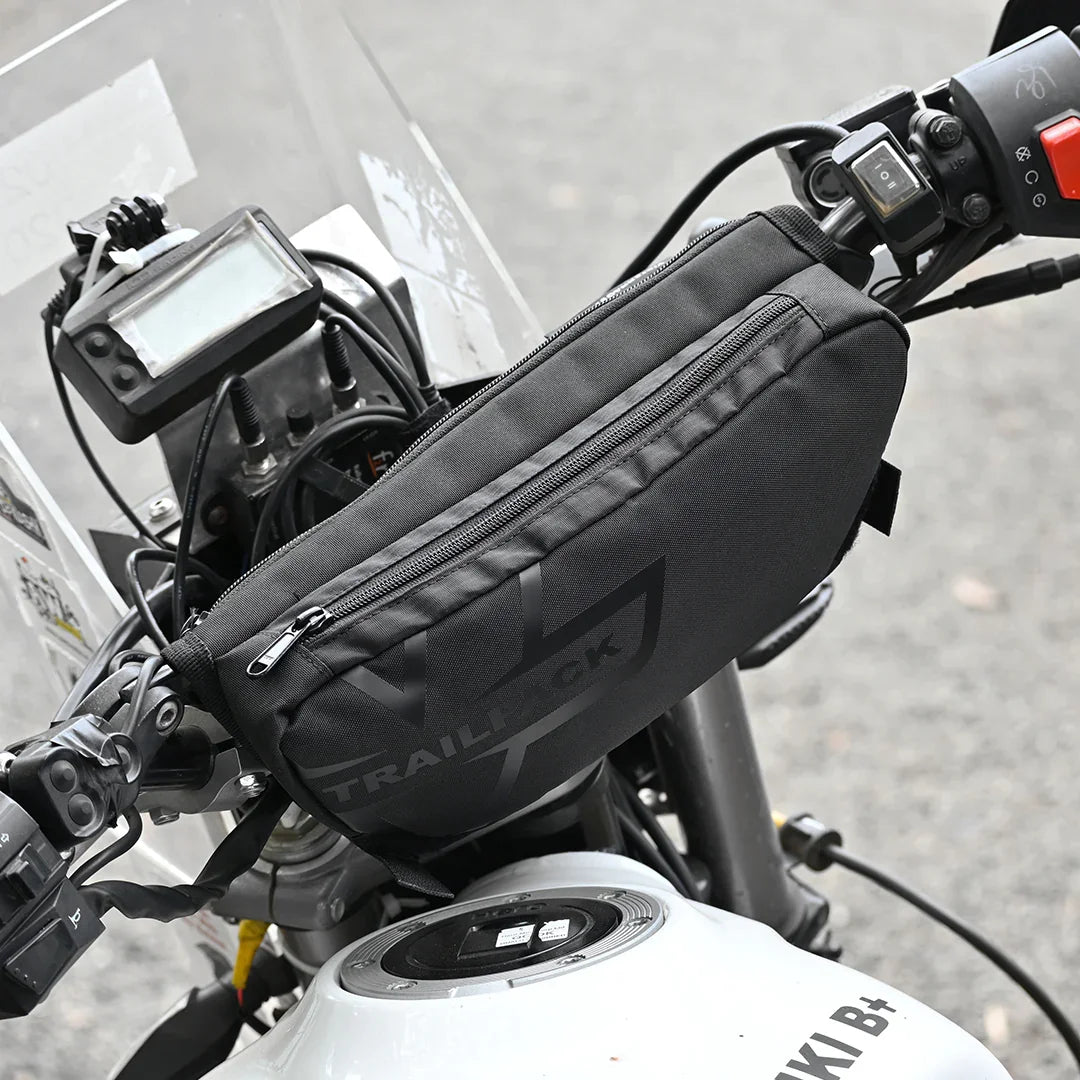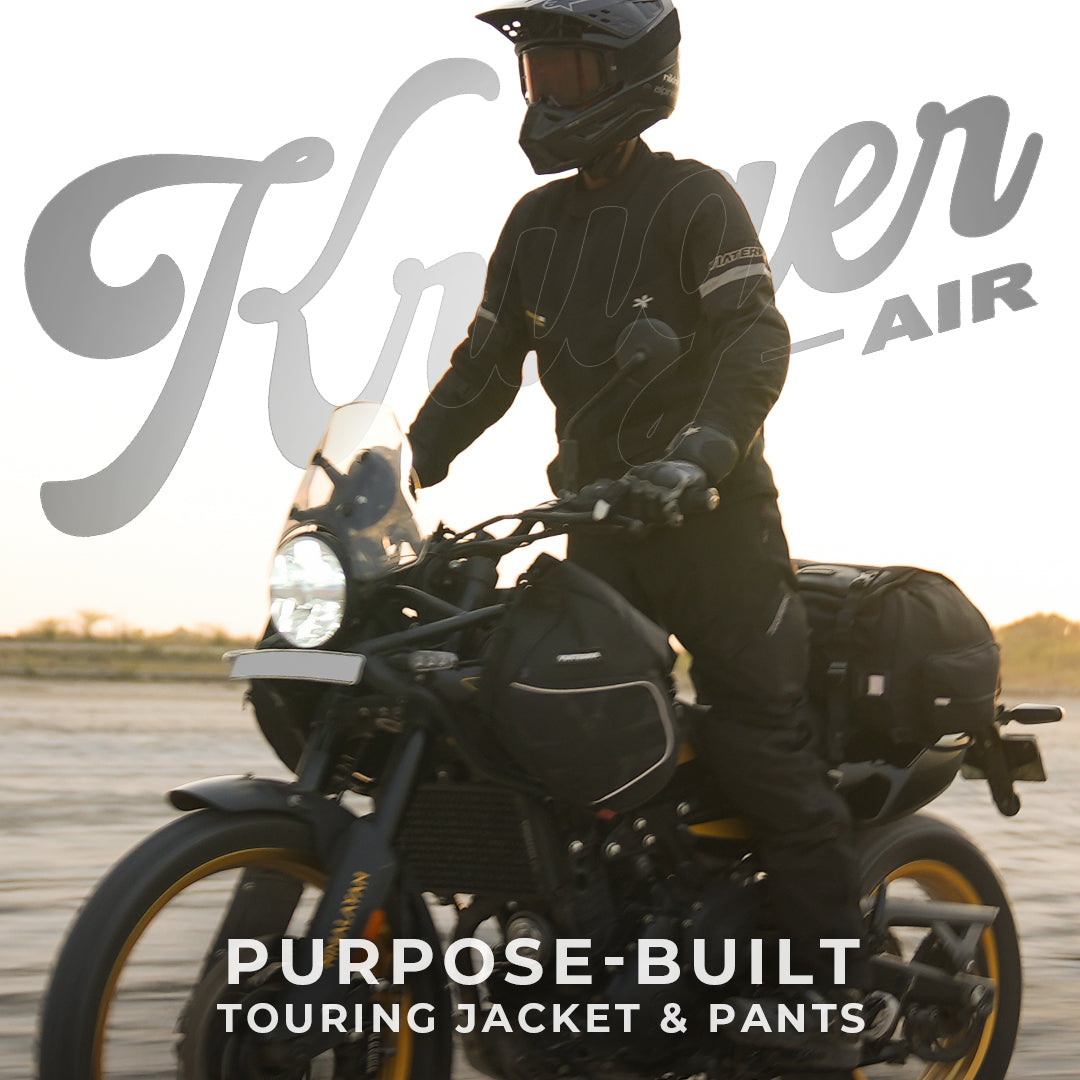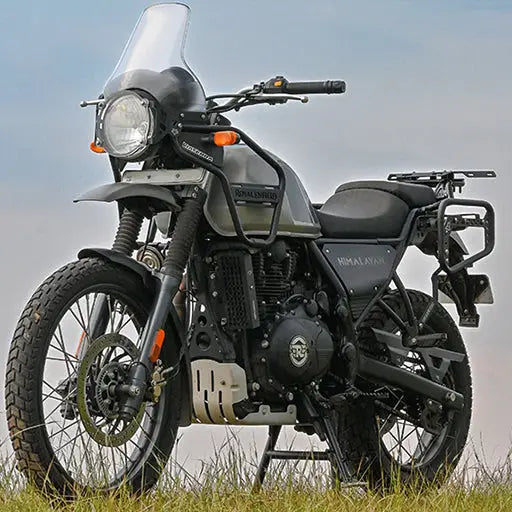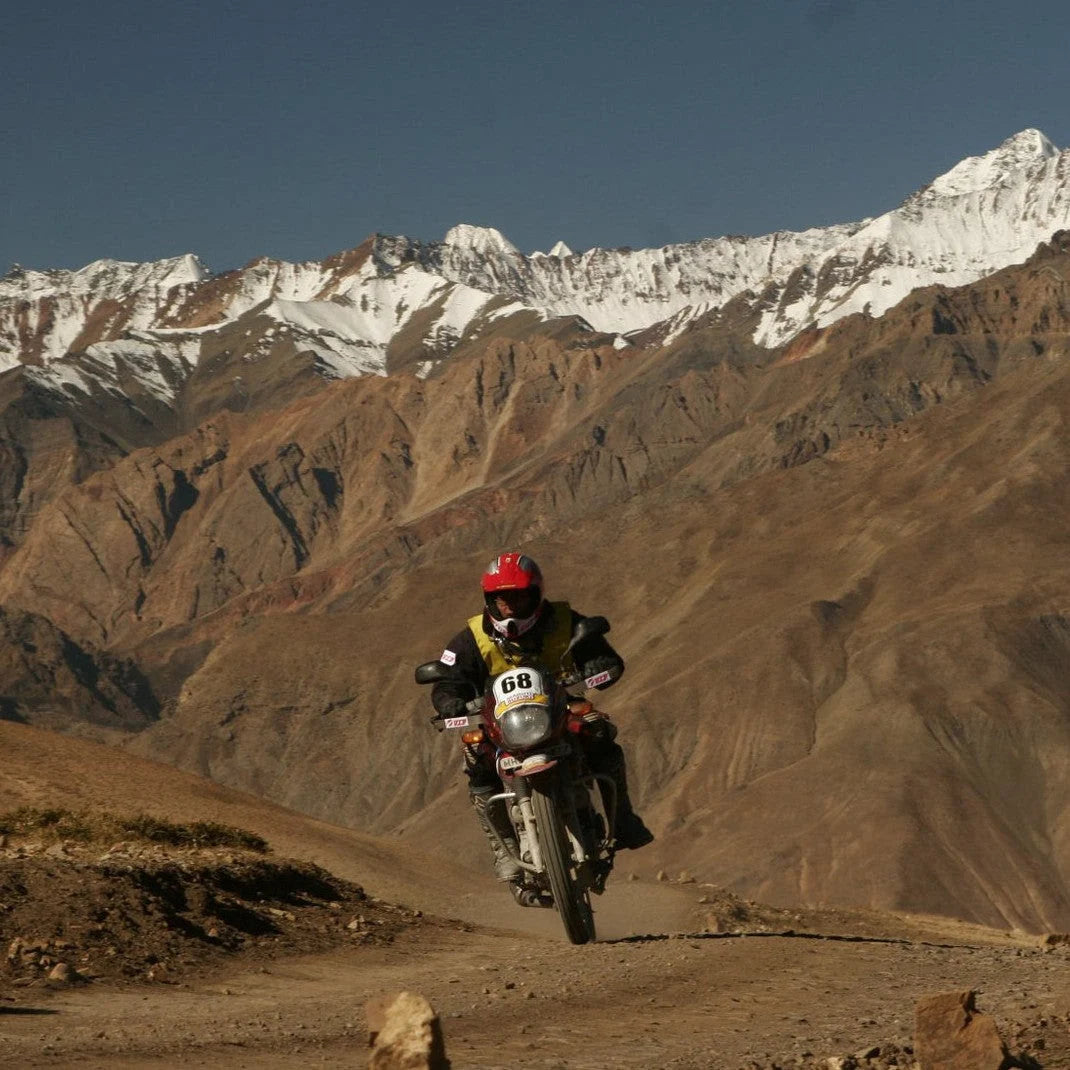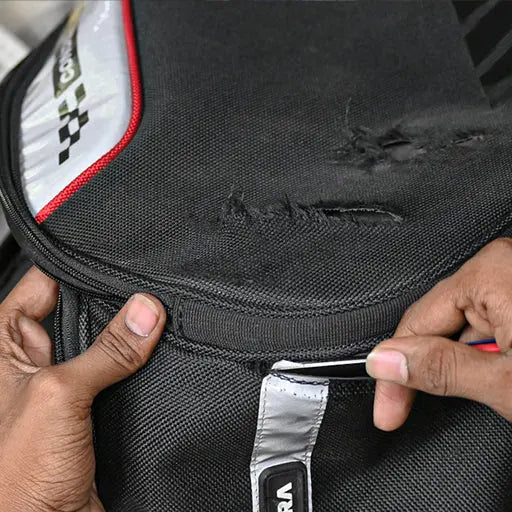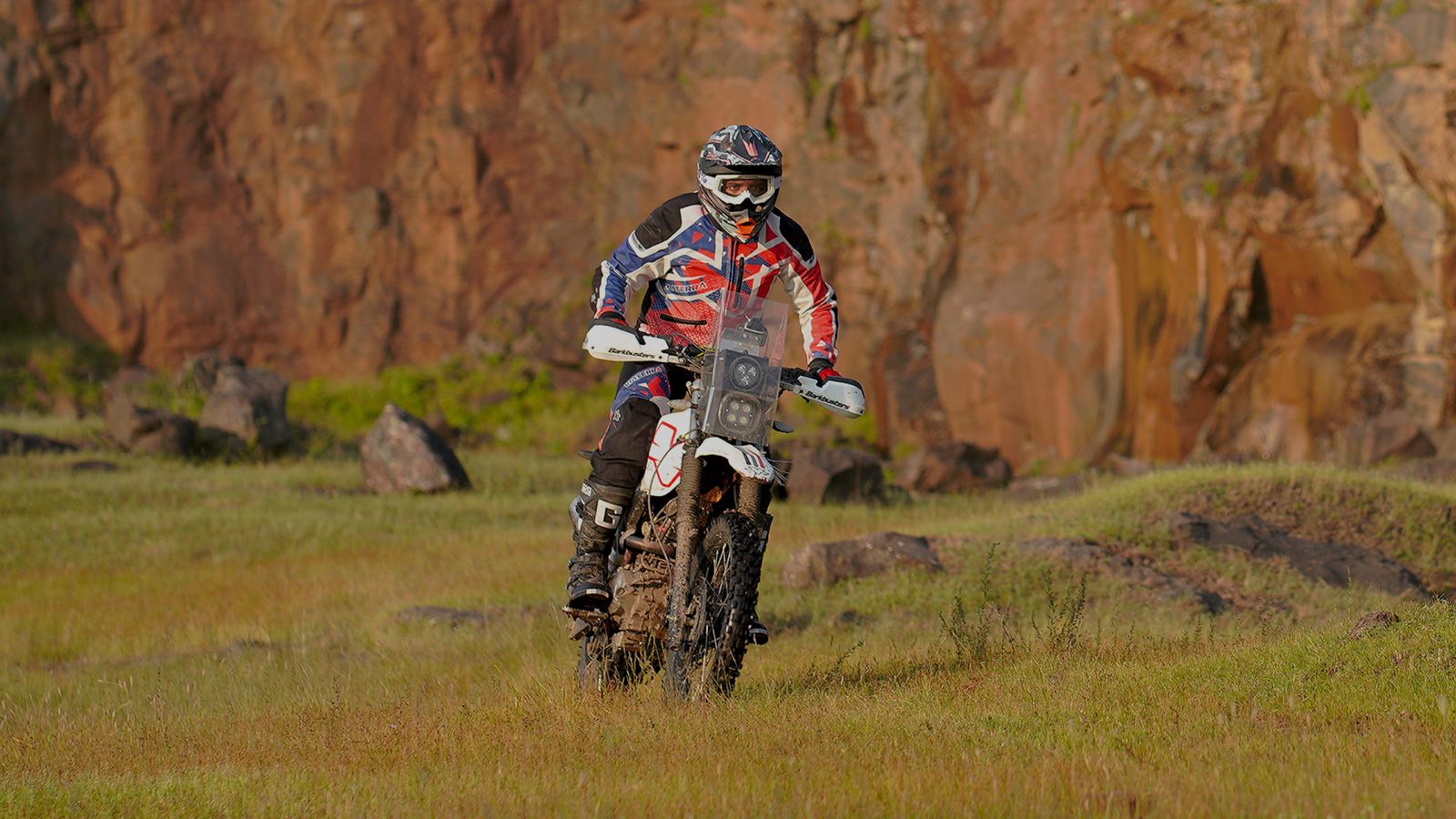You’re gearing up for a long ride, the engine hums beneath you, the open road stretches ahead, and your mind is already on the adventure. But before you hit the road, there’s one crucial question, how do you pack your motorcycle correctly? Packing isn’t just about squeezing everything you own into your bike; it’s about balancing weight, keeping essentials accessible, and ensuring your ride remains smooth and safe.
In this guide, we’ll explore how to pack your motorcycle the right way, taking inspiration from two common approaches - minimalist adventurers and comfort-focused riders.
Two Ways to Approach Motorcycle Luggage
To simplify things, let’s imagine two riders.
Rider A is the offbeat explorer, someone who loves minimalism, thrives on adventure, and wants their bike to feel nimble and responsive.
Rider B is the comfort cruiser, who enjoys exploration but prioritizes convenience and everyday comfort.
While their luggage strategies may differ, the principles of effective packing remain the same. Even if you’re a minimalist traveler or someone who prefers comfort, the goal is to ensure your gear supports the ride rather than working against it.
Regardless of your style, keeping your bike balanced, light, and organized is key, and that’s what we’ll dive into next.
Step 1: Keep It Light
Less is more when it comes to motorcycle luggage. Every extra kilogram impacts handling, braking, and overall performance. That’s why lightweight bags like the Viaterra Element Tail Bag are such a game-changer - they’re durable, waterproof, and don’t weigh you down.
Start by assessing what you really need. Look at your last trip, what did you use? What stayed untouched? Every ride is an opportunity to trim unnecessary weight. Investing in compact, versatile luggage also helps reduce bulk without compromising on storage. The goal isn’t just to carry less, but to pack smarter.
Step 2: Balance Is Everything
How you distribute weight on your bike is just as important as how much you carry. Here’s a simple cheat sheet for optimal luggage placement:
-
Heavy bags: Place them in saddle bags or panniers, equally balanced on both sides. This keeps your center of gravity low and improves stability.
-
Medium weight: Tank bags or frame bags toward the front can bring some weight forward, improving handling.
-
Light items: Camping gear, jackets, or small bags can go on the pillion seat or a tail rack. But if you’re using a larger tail bag, secure it on the pillion seat instead of the rack for better control.
A good setup ensures your motorcycle handles predictably, even on twisty roads or uneven terrain.
Rider A vs. Rider B: Packing Styles
Minimalist Rider (Rider A):
-
Prefers smaller tail bags and panniers.
-
Packs essentials only - tools, a few clothes, and a compact sleeping setup.
-
Focuses on lightweight, performance-friendly bags, like the Viaterra DryBag 40L, that can be rolled, strapped, and stowed efficiently.
Comfort Cruiser (Rider B):
-
Uses larger panniers and tail bags for extra gear.
-
Prioritizes comfort items - extra clothing, cooking gear, electronics.
-
Loves organized packing systems like Viaterra Claw Pro Tail Bags, which make accessing essentials on the road easier.
No matter which rider you are, these styles show that packing is less about quantity and more about strategy, accessibility, and balance.
Step-by-Step Packing Tips
Now that we understand different styles, here’s a step-by-step guide to make packing efficient and balanced:
1. Start With the Heaviest Items
Place your heaviest luggage in the saddle bags or panniers. Think tools, spare parts, or full containers of liquids. Keeping heavy items low and centered improves stability.
2. Front Load Light to Medium Weight
Use a tank bag or frame bag for medium-weight items you might need on the go - maps, snacks, first-aid kits, or electronics. A tank bag like the Viaterra Ace, Fly, and Oxus Tank Bags not only keeps your gear dry but also provides quick access without compromising balance.
3. Tail End: Light Items Only
If you’re using a tail bag, pack light or compressible items like jackets, sleeping bags, or rain gear. Avoid placing heavy bags on the tail rack; it makes the bike feel unstable.
4. Keep Essentials Accessible
Items like rain jackets, gloves, or first-aid kits should be within easy reach. This prevents unnecessary stops and helps you adapt to weather or road conditions quickly.
5. Secure Everything Properly
Straps, bungee cords, and locking systems matter. Make sure nothing can shift during the ride. Bags like the Viaterra Polyester Element Tail Bag come with reinforced straps and anchor points for a snug, secure fit.
Packing for Different Trip Lengths
No matter the trip length, packing strategy adapts accordingly. Here’s how:
Short Day Rides
For rides under 100 km, a single tail bag or small tank bag might suffice. Keep it light and balanced for easy maneuverability.
Weekend Trips
For 1 - 3 days, a combination of panniers and a tail bag works best. Prioritize essentials and pack clothes in compressible bags.
Long-Distance Touring
For extended rides, layering your luggage is key. Heavy items in panniers, medium weight in tank/frame bags, and light items on the tail. Always ensure the bike remains balanced and manageable.
By thinking ahead and testing your setup on a short ride, you can identify any weight or balance issues before hitting long stretches of road.
Additional Tips for Smooth Packing
-
Pack with frequency in mind: Items you’ll need often should be easy to reach, don’t bury them at the bottom.
-
Waterproof everything: Even if your bags are waterproof, consider dry sacks for electronics and clothes.
-
Think modular: Bags that can be detached or reconfigured (like Viaterra Claw Pro series) make overnight stops and city rides easier.
-
Practice before the trip: Load your bike and take a short ride to check balance and access. Adjust straps and placement if needed.
Common Mistakes to Avoid
-
Overloading the tail rack: Heavy tail loads make the bike top-heavy and harder to control.
-
Ignoring balance: Uneven panniers can lead to wobbling at high speeds.
-
Burying essentials: Rain gear, tools, or first-aid kits should never be at the bottom of a bag.
-
Loose straps: Always double-check straps and buckles, nothing should flap in the wind.
In Conclusion: Pack Smart, Ride Smarter
Packing your motorcycle isn’t just about fitting everything you own, it’s about balance, accessibility, and minimizing strain on your bike and yourself. Whether you’re a minimalist adventurer or a comfort-focused cruiser, keeping luggage light, balanced, and secure ensures every ride is smooth and safe.
Remember: start heavy at the bottom, medium in the middle, light on top. Use waterproof bags, keep essentials accessible, and test your setup before hitting the long road. With the right approach, every ride becomes more enjoyable, comfortable, and stress-free.
Gear like Viaterra tail bags, tank bags, and dry bags are perfect companions for trips of any length.
So pack smart, ride smart, and make every journey an adventure worth remembering.
FAQs
1. Can I use any bag for my bike?
While you can technically use any bag, purpose-built motorcycle luggage like Viaterra’s range ensures balance, waterproofing, and durability, keeping both gear and bike safe.
2. Do I always need panniers and a tail bag?
Not necessarily. For short rides, a tail bag or tank bag might suffice. For longer trips, combining panniers, tail bag, and tank bag ensures better balance and access.
3. Can I pack heavy items in a tail bag?
Avoid it. Heavy tail loads make the bike top-heavy and unstable. Keep heavy items in panniers and light items on the tail.
4. How do I prevent straps from loosening on the go?
Use reinforced straps and anchor points. Check periodically, especially after rough roads. Bags like Viaterra Claw Pro have locking and reinforced straps for secure fastening.


